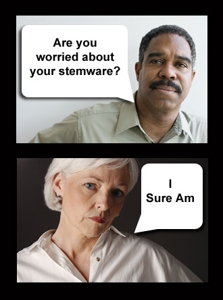Using video and audio in a website increases the probability of an accessibility problem. Where text can be readily translated into a wide variety of alternative mediums for the disabled, the complex nature of video and audio make this kind of machine-generated comprehension nearly impossible. Add to that the fact that reading a transcript hardly conveys an experience equivalent to the excitement of an expertly-produced audio file, and it’s clear that marketers have a serious challenge when targeting the disabled using video and audio.
In this article, I’ll be looking specifically at ideas to help make video and audio promotions more accessible – and marketable – to the deaf/hard-of-hearing community.
Audio Files and Transcription
Sound conveys an environment of excitement and interest which can easily be lost in transcription. However, just because you can’t reproduce the sound effectively when providing a transcription doesn’t mean that you can’t provide the excitement by other means.
It’s not uncommon to see a transcription which has been put together like this:
“Sound of glass breaking.
Male voice. Are you worried about your stemware?
Female voice, annoyed. I sure am.”
While this kind of transcription is serviceable—it conveys the concrete meaning of the audio—it completely fails to convey the emotion of the marketing message. Consider these alternative graphics below.

Providing visually interesting graphics which convey your message allows you to provide a text alternative which services a greater purpose than simply providing information: It also draws attention and holds the interest of the viewer. It may, additionally, convey more meaning to a deaf/hard of hearing visitor. Those who were born with a severe hearing impairment may never have heard the sound of breaking glass—the visual cue is a more visceral, meaningful indicator.
The key is differentiating between simply transcribing the information and reproducing the impact of the message. If you want to create an alternative to your audio message which is appealing, you need to transform the excitement of the audio into visual interest.
Think of your transcription as an independent article; the same effort which you would put into a persuasive article should go into your audio transcription.

Video Files and Captioning
Video has benefits to the deaf/hard of hearing which are inherently lacking in audio communication. Where audio media is entirely dependent on sound and can only be made available to the deaf/hard of hearing through replacement, video already contains strong, compelling visuals, supplemented by sound.
Conveying the information conveyed in the audio track of a video is usually fairly simple. Adding captioning to the video which communicates the spoken text, indicates who is speaking when multiple people are apparent or the person speaking is off-screen, and indicates other context-critical noises (such as a phone ringing or a knock at the door) is generally sufficient to communicate what is happening to a hearing impaired viewer.
Providing a transcription of the text as a supplement to the video captioning can be helpful, particularly for video containing a lot of speech. Keeping up with the rapid flow of dialogue can sometimes be challenging, and providing an alternative reference for the text benefits many hard-of-hearing viewers.
This transcription should be treated much the same way you treated audio transcription above; but instead of creating new graphics, use stills from the video. This provides a direct correlation between the text and the video, which better enables viewers to balance their experience between the two resources. Having clear landmark images available can help viewers jump between watching the video and checking text in the transcription more easily.
If necessary, readers could even have a comparable experience just with the transcription, should the video prove to be too problematic!
Audio/Video Transcriptions and Search Engines
It’s well known that search engines have a hard time indexing multimedia content. Providing transcriptions makes the text content of your multimedia resources available for indexing, and can definitely have an impact on your search engine traffic. From a pure indexing and searching perspective, the format of your transcription makes relatively little difference. However, producing your transcriptions to provide a compelling experience for transcription readers can greatly increase the value of these pages as landing pages! With the potential to drive better, more interested traffic through your site, a transcription can be a great search resource.
Conclusion
What you should take away from this article is that audio transcription and video captioning are more than just a method to provide accessible access to your multimedia resources. If you consider them as independent content for your website and put in the time and attention to make them exciting and valuable resources, they can be more than just supplemental: They can have value independent of their video or audio companions.




